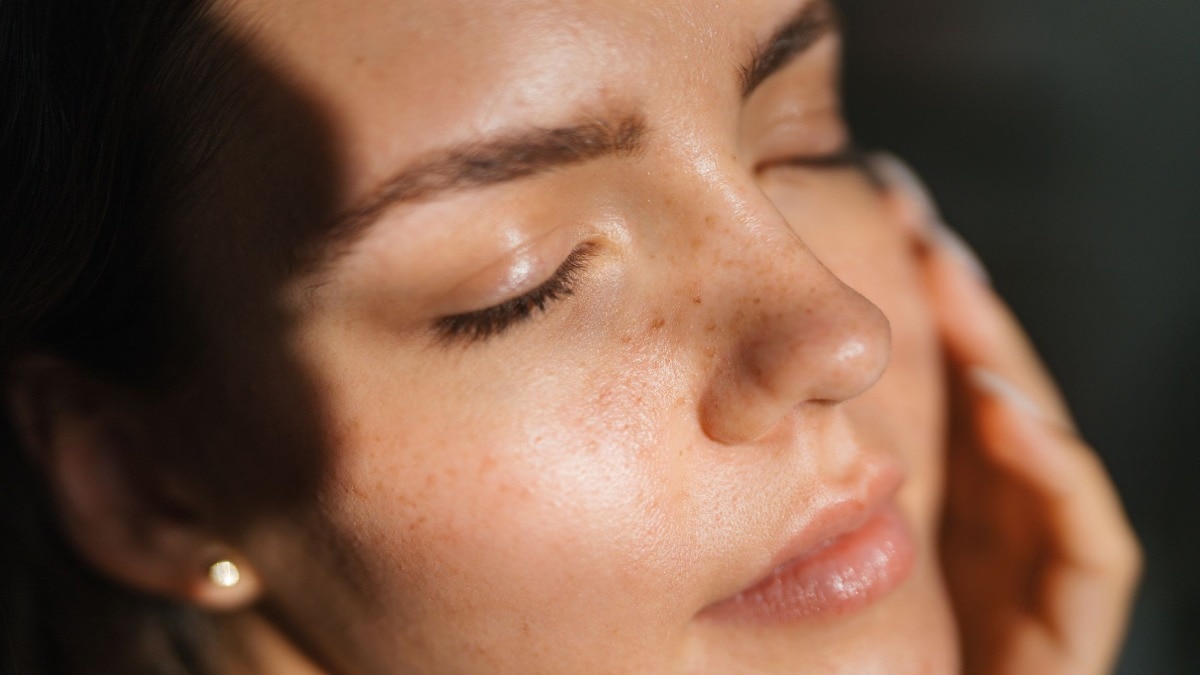Is skin flooding the answer to hydrated skin this winter?
It’s time to layer up.


‘Tis the season to be jolly—well, for most things yes, for your skin not so much. The cold climate during winter can send your skin fa-la-la-ing into dryness and dehydration. The plummeting temperatures and lack of moisture in the air can leave you feeling bone dry. This thing with winter skincare woes is that it isn’t just limited to dry skin, even the oiliest complexions can end up feeling Sahara desert dry, bang in the middle of winter (ironic, we know). Swoop in this season’s superhero, skin flooding—TikTok’s answer to all your winter woes. But does it actually work? We ask the experts.
The Science Behind Flooding
Hydrated skin is the linchpin to healthy skin—the moment it slips in the opposite direction, you open up Pandora's box for a plethora of skin woes. So what role does flooding play in your routine? “Skin flooding is not a new technique for any dermatologist. This method has been used for many years for better hydration of the skin specially during the winters,” explains Dr Shefali Trasi Nerurkar, Consultant Dermatologist. “It is a common technique used for patients suffering from atopic dermatitis. Similar flooding is also used for acne formulations in patients with severe acne and acne marks.”
The method lies in its name, where you literally bombard or ‘flood’ the skin by layering it with moisturising products. Think of it as a double-decker sandwich—the more the filling, the juicier the taste. Similarly, when you layer your hydrating serums and moisturisers in the right manner, you’re able to increase product absorption and improve the efficacy of your skincare. Doing this also helps repair and strengthen the skin’s barrier, leaving you with a healthy and radiant glow.
How To Flood Your Skin?
The internet has several methods through which you can do the skin flooding technique, which can be a little overwhelming—after all, there’s only so many serums you can use, right? Dr Nerurkar, however, breaks down the best way you can make the most of skin flooding, without going overboard. “Skin flooding means layering of the skin with different formulations of moisturisers in order to hydrate the skin and prevent dryness and roughness. It starts by wetting the skin with plain water. Then spray some hydrating mist on the wet skin. A serum containing hyaluronic acid or niacinamide is used as the third step. This is followed by application of a lightweight moisturiser and sunscreen,” she advises.
According to Dr Nerurkar, double layering followed by sunscreen is the perfect way to hydrate your skin. “Ingredients such as hyaluronic acid can be used as a base serum and then go in with an oil-in-water moisturiser. These moisturisers are lighter and more suitable for normal to oily skin. You can also use a moisturiser first, followed by depigmenting serums in order to treat hyperpigmentation.”
Moisturisers absorb way better when the skin is damp, and therefore most dermatologists recommend moisturising your skin immediately after a shower. Dr Nerurkar suggests following the same advice when your skin flooding too. She says, “Layering two to three products locks the moisture and prevents dryness.”
When NOT To Do It
There are some skincare trends that aren’t a one-size-fits all, and skin flooding is one of them. According to Dr Nerurkar, while this trending technique really helps those with dry skin and atopic dermatitis during winter, it should not be opted for those with oily skin—it can lead to acne breakouts. Even those with normal skin need to be careful with the kind of ingredients they are layering with. “Overlayering should be followed by careful cleansing to remove the excess creams after a few hours, otherwise it can lead to colonisation by bacteria and later skin infections.” Those with any viral, fungal, or bacterial infections, and acne flare ups shouldn’t opt for this technique too. And remember, skin flooding is only meant for winter—hotter, more humid months are best off with a less thick and layered approach.
This TikTok hack is definitely expert approved (at least till the summer sets in).










